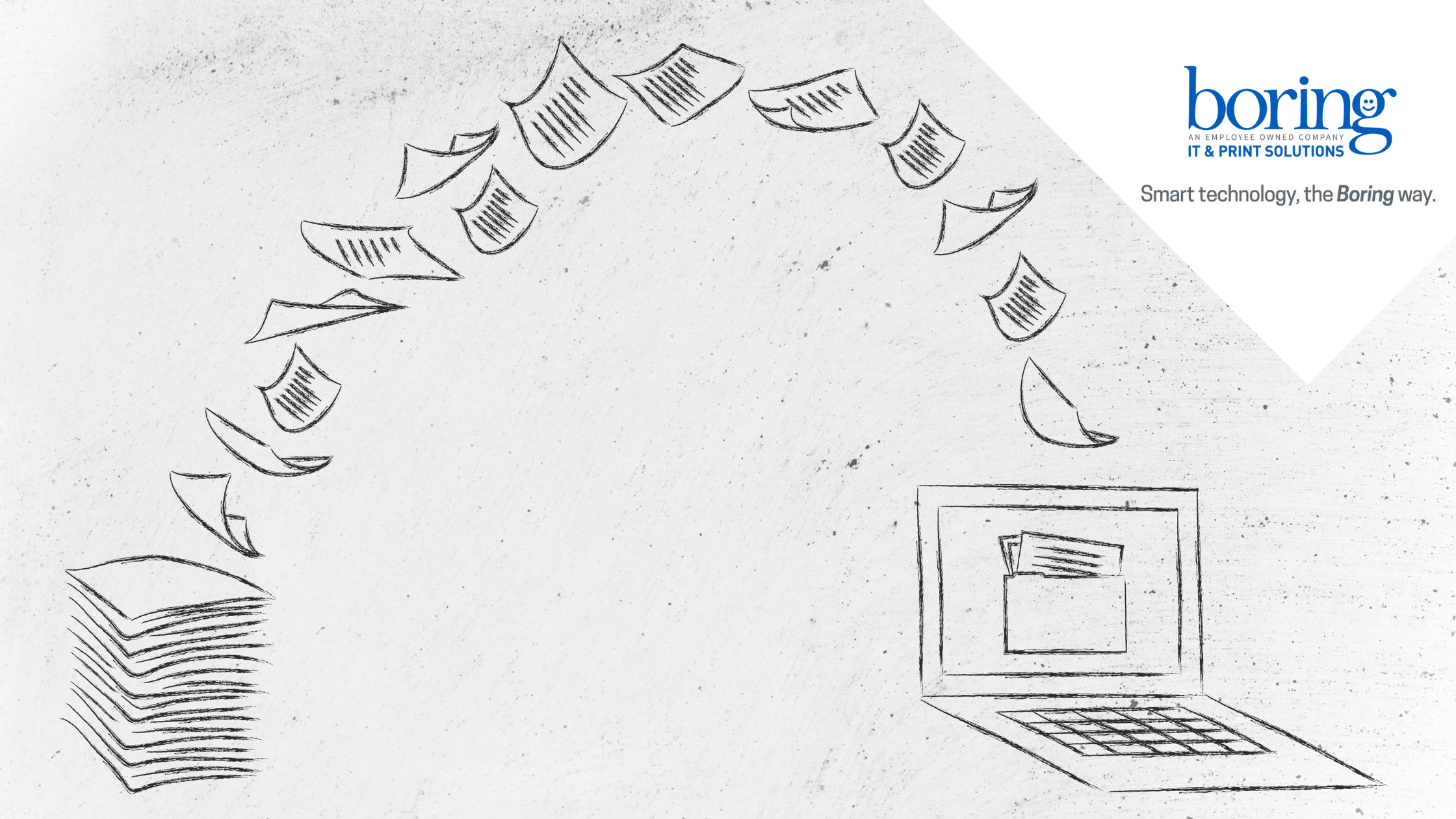Boring’s Not So Boring
Blog
How to Eliminate Paperwork in Your HR Department

If a company uses manual processes, HR can be one of its most paper-intensive departments. Using a free file sharing app like Google Docs or Dropbox may feel like a step up from using paper. However, these apps are designed to enable collaboration on a project at one point in time. They don’t allow for management of the full document lifecycle or for version control, automated workflow and security that protects your company from fraud and cyberthreats.
With a document management system, centralization, privacy protection and business process efficiency are built in. HR staff, managers, employees, and contract workers use one system enabling a consistent approach throughout the organization. Automation frees staff from the inconvenience of managing long email chains and constant status inquiries. In addition, employees and managers may already be familiar with the interface if the solution is used to increase productivity in other departments.
When an HR department goes paperless it replaces paper records with a centralized digital repository and protects sensitive employee information with secure access rights and data encryption. It also opens the door for employee self-service through features that include eforms, authorized employee searches, electronic signatures and portal integration.
An emergency services agency takes charge of HR
With almost 300 member groups, Johanniter Emergency Relief is one of the most important charitable organizations in Germany. Its commitment is broad: emergency medical services, disaster relief, and first-aid training, as well as providing childcare and services to young people and the elderly. Johanniter is also active internationally in the event of famine or natural disasters.
Secure storage of HR documents was the most important goal for introducing a document management system. A personnel archive needed to be set up for more than 20,000 full-time employees and 36,000 volunteers across Germany. The individual offices wanted document access from a single database. Centralized filing of sensitive documents and uncomplicated but protected access were key requirements.
With DocuWare, all HR files are available to authorized staff in a digital format. Job applications, sick leave documents, training certificates or change of address which arrive in the respective HR departments by mail are scanned and archived by employee number.
The HR team appreciates the quick access to documents. Since they no longer send files to regional associations by mail, they are sure that no unauthorized employee accesses them. “Today, we have made many of our processes much more efficient. In the area of human resources, employees have faster, central access to their personnel files,” IT Administrator Stefanie Schlinke says.
5 ways automated HR processes eliminate paper for good
1. Recruitment
Managers start the hiring process with a simple employee requisition eform. Job applications are centrally stored, and the hiring workflow manages the communication between HR staff, managers and the applicant. All team members involved are connected by a unified, digitized process. Your HR staff can create job postings, receive and automatically index resumes based on pre-defined skill sets, and use workflows to route applications for review, schedule interviews and gather applicant feedback. Interviews are conducted with qualified candidates and those who don’t meet a department’s needs are sent an email informing them of their status. Once a candidate accepts the job it kicks off the onboarding and provisioning processes to ensure your company policy is followed and to guarantee a well-organized start for new employees.
2. Onboarding
Your onboarding process starts as soon as an applicant accepts the job. eForms can pre-fill new hire documents. So new employees no longer fill out repetitive information on multiple paper forms. With electronic forms your department can capture all required employee data upfront, one time, and populate other onboarding documents such as tax forms, benefits, and other employee forms.
You can also create an onboarding checklist of required tasks, including acknowledgement of employment, confidentiality agreements, distributing employee handbooks and initial training plans. Because of an automated provisioning workflow, the employee is guaranteed to have the software and equipment they need to start their jobs on day one.
3. Performance Management
When the criteria you set is fulfilled, an automated notification informs the manager and employee that a performance appraisal is due. The process of creating and delivering the appraisal to the employee, as well as their response, is tracked through to completion. You can customize performance appraisal templates and automatically set deadlines, while capturing and storing the information.
4. Employee Separation
When an employee leaves the company, a document management solution launches a separation eform that includes all required exit documents to be signed and lists all company property to be returned. Automating this process ensures nothing is missed and the exit process is completed without compromising the company’s security.
5. Compliance
Manage all of your HR documents to meet privacy requirements with business rules your company defines. Employee records are stored in a multi-tiered folder structure that differentiates access rights among HR, managers and employees. Retention schedules are enforced automatically. This ensures audit-readiness and compliance with PII, GDPR, EEOC, HIPAA and other regulatory requirements.
Interested in learning more about our Document Management solutions? Give us a call or shoot us a message here: https://boring.com/contact/
Source: DocuWare Blog
Contact Us

